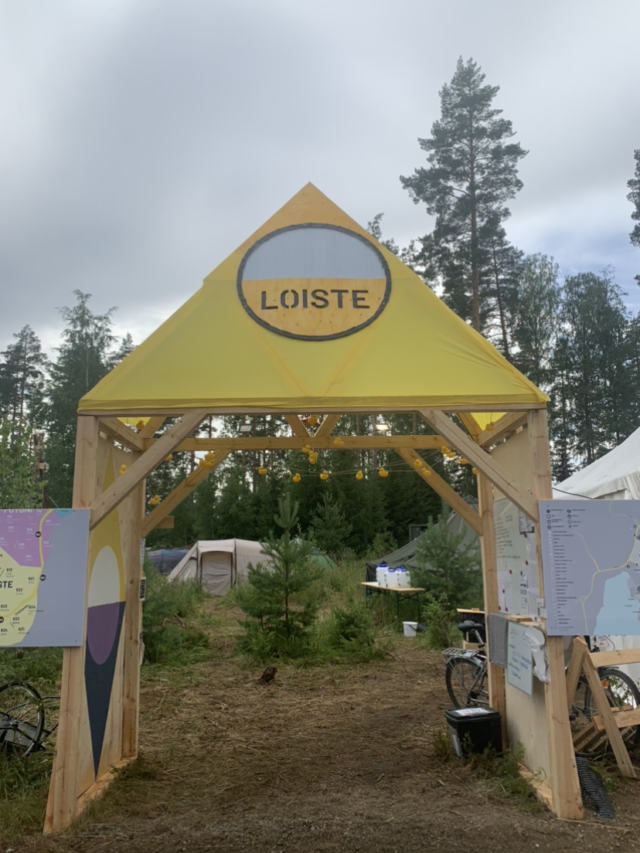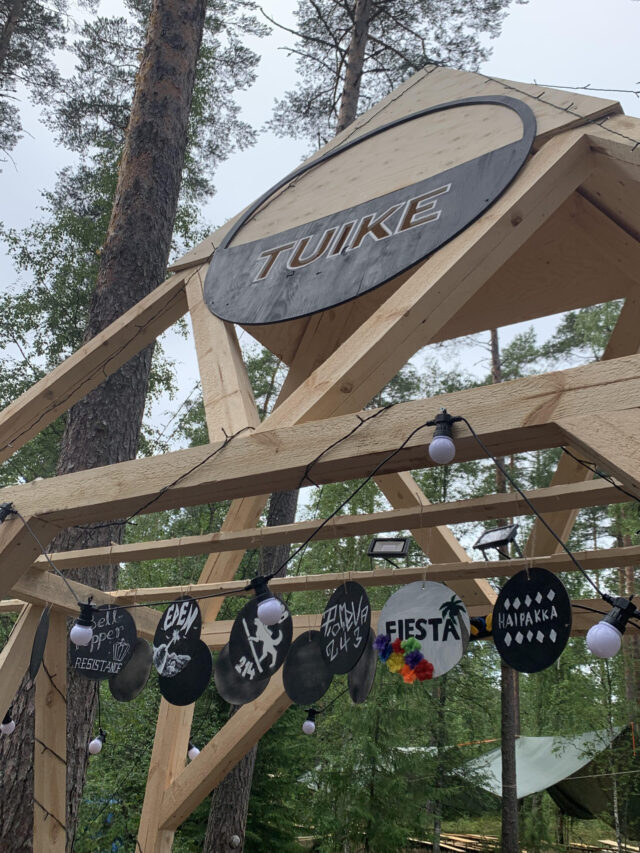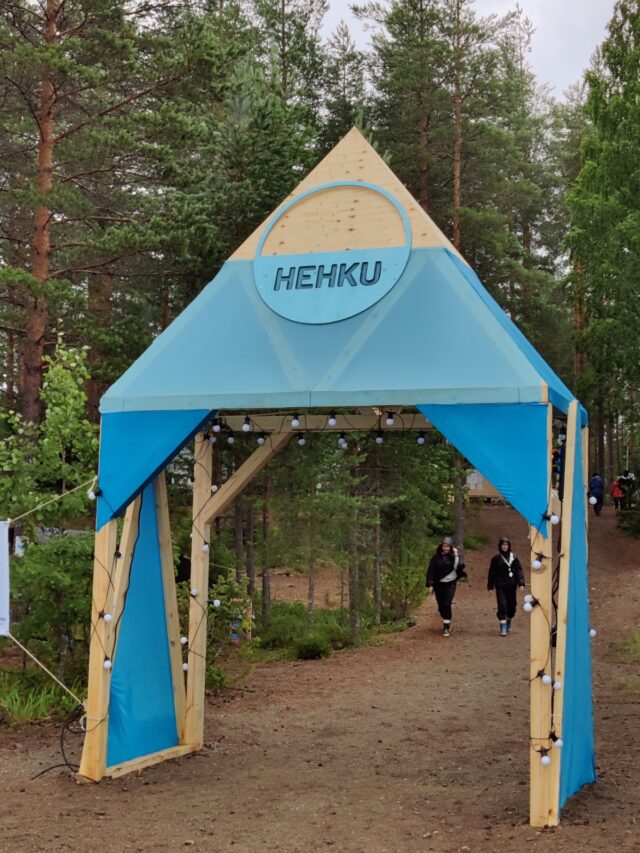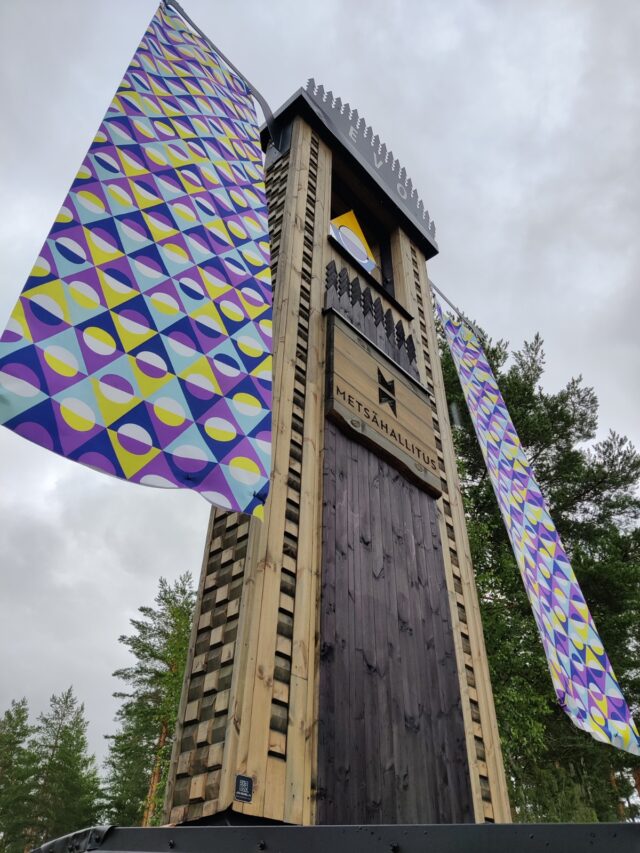To act responsibly, we must use different materials in a sustainable way. Ideally, materials would not be wasted at all – a zero waste life. However, if waste is generated, it is reused as raw material or burned for energy. It is becoming rare that waste ends up in a landfill these days.
This story tells how waste accumulates in Kajo and what happens to it eventually.
Not waste, but raw material
A tent village of thirteen thousand people needs a total of 350 waste/garbage containers. These containers are placed in 39 different places according to where the waste is generated. Kitchens produce the most waste: especially food waste, cardboard packaging, metal cans and plastic. Ash comes from the sauna, medical waste and paper (classified as an information security risk) from the camp hospital. Cardboard, plastic, energy waste, cooking oil and bio waste from coffee shops. From the camp ticket booths and all around the camp there is regular waste. In addition, the camp produces small amounts of battery waste, electronics waste, i.e. broken devices, and hazardous waste, i.e. individual paint cans or aerosols after painting.
Strictly speaking, we shouldn’t talk about waste, because all material that can be reused is raw material. For example, the bio-waste produced by the camp’s kitchens is collected in presses and taken to the waste treatment plant, where it is made into biogas and composted into soil. Kajo aims to promote the reuse of waste by investing in recycling and striving to reduce the number of disposable goods and structures.
Recycling: for reuse or for energy?
Energy waste and plastic waste are recycled separately at Kajo. The separation of plastic enables it to be recycled, because without separation it would end up being used as energy, i.e. incinerated. According to the priority order of waste that guides sustainable waste management, recycling is a better measure than energy utilization. Increasing the recycling rate is also a national and European Union goal, which we at Kajo strive to promote. So, let’s also remember to sort the waste correctly on Kajo!
Overall, the biggest waste effort takes place after the camp, when the camp is removed from Evo’s forests. Efforts have been made to reduce the number of various structures ending up as waste at Kajo, but the final situation will only be seen after the camp. The best thing would be to be able to use, for example, loanable tents or other solutions that can be moved and reused as structures. The same order of priority applies to structures made of wood as to other waste: reuse is a better option than burning. Concentrating large camps in the Evo camp area also makes it possible that not everything has to be built for a single camp; some structures can be made permanent.
Functional recycling as part of a sustainable large camp and a piece of the circular economy
After the camp, we will find out how much of each type of waste was generated, and how it was treated. The exact, concrete form of each waste cannot be known. After the camp, however, you can think, for example, that the bucket sold in the store is made from plastic waste generated in Kajo, or that the family’s hybrid car runs on gas produced from Kajo’s biowaste.
In terms of responsibility, it is good to remember that waste is not the biggest component of the camp’s carbon footprint. According to a preliminary estimate, the carbon footprints of the energy used for, say, logistics, i.e. movement and transportation, and the camp infrastructure, like electricity and heating, and the food eaten at the camp are each much larger than the carbon footprint of the generated waste. However, in organizing a sustainable large camp, materials that can be reused as much as possible, and functional recycling are an essential part of the whole.
Text: Kajo’s Responsibility Team
















